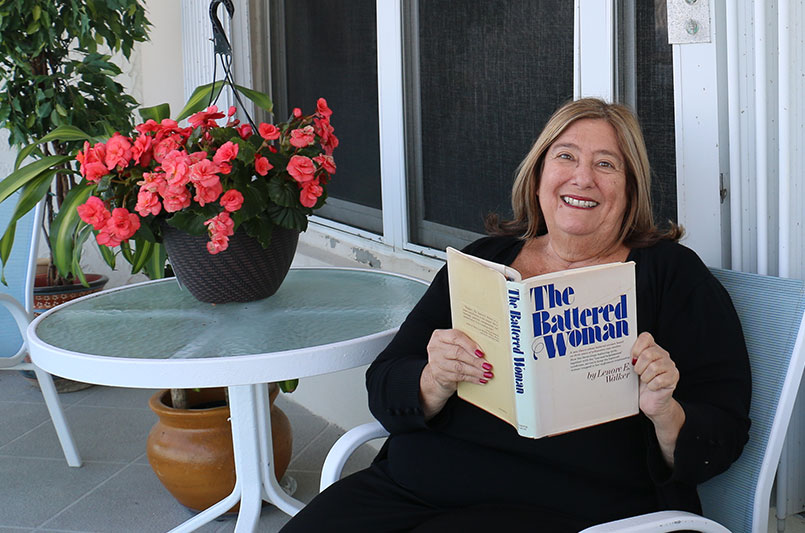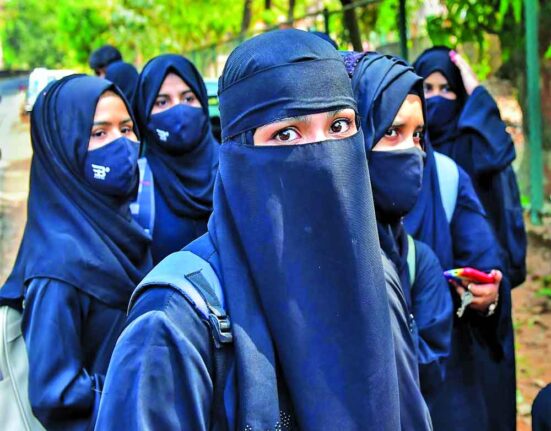This Article is written by Divyanshi Shukla a 1st year B.A. LL.B. (Hons.) student at National Law Institute University, Bhopal. This Article highlights the pertinent Issue of Battered women syndrome in Indian context and the defences available.
INTRODUCTION
“The enemy doesn’t stand a chance when the victim decides to survive.”
– Rae Smith
All over the world, violence against women is a severe issue. Physical violence has been reported by one-third of women aged 15 to 49. This number amounts to millions of women who have been abused by their husbands and other family members and continue to be abused. This dismal report also point to the fact how widespread domestic violence is. Especially in regions like South Asia and Africa, where majority of women are married off in their childhood sans education and awareness. When violence is inflicted on them, it has a lot of consequences on women’s mental and physical health and it leaves victim with deep emotional scars. One of these consequences is battered women’s syndrome or BWS. BWS is a result of long- term domestic violence. It is considered as a sub category of post-traumatic stress disorder (PTSD).

This concept of battered women syndrome was developed in the late 1970s by a psychotherapist, Lenore Walker[1]. She claimed that the syndrome defined a set of specific psychological and behavioural symptoms that arose from extended exposure to intimate relationship violence based on original research.
This syndrome applies to the women syndrome where the women may feel helpless. This may lead women to believe they deserve the abuse and that they are unable to stop it. This is one of the main reasons why women do not report their abuse to the authorities.
INDIAN CONTEXT AND NALLATHANGAL SYNDROME
In Indian context, the term ‘Nallathangal syndrome’ is used for BWS. Even though, this syndrome is widespread in India, there is no formal recognition of Battered Woman Syndrome in Indian law as of yet. Indian courts have recognised BWS in a few cases although there have been a lot of instances of the same, this points to patriarchal Indian society and its antipathy towards trauma that women suffer.
One of the landmark judgements in India relating to BWS is Manju Lakra v. State of Assam[2] In this case, Manju Lakra was a victim of domestic violence and was suffering from BWS. One day, as a response to her husband’s brutality, she took the piece of wood he was beating her with and hit him, her husband died as a result of injuries. The Guwahati High Court recognized the circumstances in which she was living and the trauma she was suffering from. Ergo, the court set aside the charges of murder and held her liable for culpable homicide not amounting to murder instead. This is landmark case since it is the first reported case where BWS was considered as a ground for provocation and thereby a defence for a battered woman who killed her husband. However, this judgement is just an exception and not the rule.
In reality, the contemporary literature on the subject is not adequate in terms of encompassing BWS within India’s statutory framework[i]. There is no legal status of Battered Women Syndrome as a defence available per se. The only legal framework available to deal with it is Indian Penal Code (IPC) and the defences available within it and they often fails to adequately envision Battered Women Syndrome as a defence leaving behind number of cases where this can be taken as a genuine defence by women.
In order to safeguard interests of women who are suffering from Battered Women Syndrome, courts should take everything in consideration before formulating laws like the social, psychological, emotional and economical status of the woman in question. Indian Penal Code does provide defences but those fail to understand and emphasize with mental, emotional and physical situation of the women. The defences available are discussed in this article.
USE OF BATTERED WOMEN SYNDROME AS A LEGAL DEFENCE: DISCUSSION OF DEFENCES
- Grave and Sudden Provocation –
This is the first exception under section 300, which defines murder. As test laid down in R v. Duffy [3]for using this defence, there should be sudden and temporary loss of self-control. The objective test of provocation, according to which the court must consider whether a reasonable man, placed in the same circumstances as the accused, would have been provoked to kill the victim, has been endorsed in a number of cases. Nevertheless this defend may not work in case of battering women. The application of ‘sudden and grave provocation’ is not feasible since in most of the cases, the provocation is not sudden but it is product of years of severe long term domestic abuse. Hence, it is not a specific trigger that leads to provocation. Rather, the provocation continues for an extended period of time. This gradual nature of provocation that cumulates over a period of time necessitates the need for encompassing ‘sustained provocation’ as a defence for murder in case where the defendant woman is suffering from battered women syndrome,
- Self Defence –
Self-defence can be used as a defence in cases of murder. But in cases of battered women killing their batterers, it becomes very difficult due to circumstances in which they kill their batterers. The exercise of the right to self- defence extends to the situations when there is reasonable apprehension of harm and there is no opportunity for the person to retreat.[4]
This defence is not suitable in case of battered women because generally in cases of battered women, it is very difficult to prove that the battered women killed their perpetrator in exercise of self-defence because in majority of cases where battered women kill their batterer there is no imminent threat, neither is there any grave apprehension. Furthermore, they generally have sufficient time to retreat safely. Therefore, it is of no surprise why this defence has never been successfully pleaded by any battered woman in any court of India to set aside charges of murder. Battered women do not apprehend danger while occurrence of abuse but during the hiatus when there is no apparent apprehension of danger, which runs contrary to the typical concept of self-defence. This is a result of continuing state of danger in which battered women live.
Charles P. Ewing, a highly acclaimed forensic psychologist, in his book had asserted that “private defence in cases of battered women is justified because battered women kill to protect their battered psychological self, and not in physical self – defence.” This underscores the need for inclusion of self- defence for battered women even where there is no imminent apprehension or threat of harm. It is high time where law encapsulates psychological factors along with physical ones in realm of defences available for battered women.
- Necessity – The conditions required for this defence narrow down the choices available to battered women. This is because battered women choose to live with their batterers by themselves, so there is no point of necessity that may lead to killing the batterer. In State v. Allery[5], Sherry, the wife was victim of domestic violence. She was routinely assaulted, beaten and even was hospitalised. She left her husband and left home. One day, she returned home and shot and killed her husband. She pleaded the defence of necessity in the court. The court rejected her pleading and held her liable for murder.
Especially, in context of Indian society, where marriage is perceived as sacrosanct and husbands are regarded as heads of the family, women are expected to remain married for sake of family and her children. Hence, it is not logical to think that battered women would leave their home to escape barbarity inflicted on them.
Aforementioned factors exhibit that these general defences are not adequate to deal with cases in which battered women kill their batterers. The self – defence of sudden provocation falls to account for the potential that a woman could lose control and kill her batterer out of apprehension of harm, ergo using these defences is not a feasible option. There is a need to expand the scope of defences to take into consideration the situation and circumstances in which battered women kill their batterers. As in case of R. v. Thorton,[6] the woman was being abused and threatened by her husband, who threatened to kill her while she slept, one day she killed her husband out of apprehension. Therefore, it is important to take into account that in such scenario, apprehension is so strong that it may fail to meet the required test of reasonable apprehension, as battered women have the fear of being attacked at any time, even if not immediately. Law should recognize this apprehension as reasonable since in such cases, the risk of violence is there if not apparent then in mind of the battered women.
JUDICIAL INTERPRETATION IN INDIA
In India, the legal position of battered women has not developed. There is no specific law in India that takes into consideration the sufferings of battered women and the violence and mental trauma inflicted on them. It is not even accounted in official statistics relating to crimes in India. Nevertheless, on the bright side, Indian courts have started to recognize the testimonies given by battered women to decide cases. ‘Sustained provocation’ has been recognised by courts. The judgement in Manju Lakra case paved the way for inclusion of BWS in judicial interpretation. However, even though court recognized the testimony given by the battered woman, it nowhere made mention of BWS in the judgement neither did the court give any justification for such aversion. In the Indian context, courts do not on the batterers and the violence inflicted upon the battered woman, and the mental trauma that the woman suffers. Rather, courts in India focus more on the abnormal status of battered woman’s mind and shift the blame to her. The women who plead Battered Women Syndrome as a defence are considered ‘mentally ill’ and hence incapable of thinking as a reasonable and prudent person. Instead of punishing the battered women, attempts should be taken empathize with them and look into the bigger picture of domestic violence and ways to limit it, awareness should be created and women should be encouraged to speak against domestic violence and barbarity inflicted upon them.
In India, the concept of private defence must be expanded beyond the immediate physical threat to encompass private defence in situation of battered women, who do not kill their batterer in self – defence, rather to protect their psychological self.
Reinterpretation of some defences is need of the hour to take into consideration situations where battered women kill their partners. Law should encapsulate psychological factors along with physical ones in realm of defences available for battered women.
Especially, in the Indian context where women are taught to be submissive and sub-ordinate to their husbands, they are silenced and they do not talk about the violence inflicted on them as they consider violence to be their fate and they think they deserve and it is normal. Gradually, they fall prey to Battered Women Syndrome. Law does not take into consideration these detrimental aspects while assessing the charges and damages.
CONCLUSION: Battered Women Syndrome
In 21st century, women are acing at each sphere of life, in this era of technological and scientific advancements, even if one woman goes to bed afflicted with domestic violence , with deep physical and emotional scars, even if one woman struggles to hide the trauma and scars from the society, then we failed as humans. It is pertinent from the aforementioned factors that to our great dismay, nearly one-third of women in age group of 15-49 suffer from domestic violence. The issue of domestic violence is widespread and complicated. Women, as a result of domestic violence, suffer through a lot of health and social problems. Battered Women Syndrome is a set of specific psychological and behavioural symptoms that arise from extended exposure to intimate relationship violence. The purpose of this paper is to underscore BWS in the Indian context and the ways in which traditional defences fail to incorporate situation of BWS in themselves and thus are not feasible. The present legal system does not take into account the psychological aspect of battered women. In contemporary times, it is critical to evaluate the mental condition of battered while assessing proportionality of the act committed. As pointed out by Russell Wilson “the more we choose not to talk about domestic violence, the more we shy away from the issue, the more we lose.”
Legal reformulation and reinterpretation are needed that would focus on experiences and mental aspects of the battered women. A battered woman develops a feeling of powerlessness and hopelessness. Sometimes, the fear of violence and violence leave emotional scars on the mind of battered woman so grave that she is not able to function as a reasonable person of normal prudence.
Focusing on abuse and safeguarding rights and interests of battered women would go a long way towards changing age old stereotypes that delegitimize women’s experiences. The law should take into account the social, political, cultural and economic aspect of the battered women into account before the assessment.
This is how we can create a world worth living for battered women where they also feel safe to speak out about the violence inflicted upon them and ergo, they should know it is absolutely fine to walk out of a relationship than to suffer silently.
As there is a common adage, “Never forget that walking away from something unhealthy is brave even if you stumble a little on your way out of the door.”
[1] Leone P. Walker, Terrifying Love: Why Battered Women Kill and How Society Responds 133 (1989)
[2]Manju Lakra v. State of Assam (2013) 4 GLT 333
[3] Aman Deep Borthakur, ‘The case for inclusion of ‘Battered Woman Defence’ in Indian Law’, 11 NUJS Rev. 1 (2018)
[4] Aman Deep Borthakur, ‘The case for inclusion of ‘Battered Woman Defence’ in Indian Law, 11 NUJS Rev. 1 (2018)
[5] State v. Allery (1984) 101 WN 2d 591
[6] R v. Loughman, (1981) VR 443, 44
![]()





Leave feedback about this